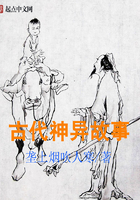CATHOLIC REACTION IN THE REIGN OF QUEEN MARY (1553-1558)See bibliography, chap. i., ii., /State Papers/ (Home, Foreign, Venetian). /The Diary of Henry Machyn, etc., from 1550 to 1563/(ed. by J. G. Nichols, 1854). Lingard, /History of England/ (vol.
v.). Gairdner, /Lollardy and the Reformation/, vol. iv. 1913.
Innes, /England under the Tudors/, 1905. Zimmermann, /Maria die Katholische/, 1896. Stone, /Mary I., Queen of England/, 1901.
Haile, /Life of Reginald Pole/, 1910. Zimmermann, /Kardinal Pole, sein Leben, und seine Schriften/, 1893. Lee, /Reginald Pole, Cardinal Archbishop of Canterbury/. /Cambridge Modern History/, vol. ii., chap. xv.
Lady Jane Grey might be proclaimed queen, but until Mary had been lodged safely in the Tower the triumph of the conspiracy was not assured. Efforts had been made to induce her to come to London, but warned by secret messages dispatched by her London friends, she fled from her residence in Hundon to a castle in Suffolk, from which she addressed letters to the council and to the prominent noblemen of England asserting her rights to the throne. From all parts of the country thousands flocked to join her standard, while the frantic appeals of Northumberland and his colleagues failed to awaken any genuine response even in London itself. Northumberland, much against his will, consented to lead the army against Mary, who was advancing towards the capital, but after his departure, the members of the council, convinced that their cause was hopeless, deserted their leader, and permitted Mary to be proclaimed (19th July).
Northumberland surrendered himself to the mercy of the new queen, and was committed to the Tower together with his principal adherents. On the 3rd August Mary made her formal entrance into London where she received an enthusiastic welcome from the citizens. Her first care was to liberate some of those who had been arrested during the previous reign, Bishops Gardiner, Bonner, Heath, and Day, the Duke of Norfolk, and Lord Courtenay, the latter of whom had been in confinement for fifteen years. As a fervent Catholic, who had upheld the Mass in the days of Edward VI. even at the risk of her life, there could be no doubt about the new queen's religious views, and in many of the churches in London and throughout the country the English service gave place immediately to the Mass. In an interview with the lord mayor of London, and afterwards in the public proclamation addressed to all her subjects, she announced that, though it was her intention to follow the Catholic religion, she had no desire of resorting to compulsion to force it on her people against their will, and she exhorted them to live together in Christian harmony, avoiding the "new found devilish terms of papist and heretic." As a sign that vengeance and cruelty were no part of her programme she exercised great mercy towards those who had conspired to deprive her of the throne, only a few of whom, including the Earl of Northumberland, were put to death. Possibly in the hope of playing upon the feelings of the queen and of securing a pardon Northumberland announced publicly his return to the old faith and his acceptance of the Catholic doctrine on the Eucharist.
Charles V., on whose counsel Mary relied, advised her to proceed cautiously with the restoration of religion in England. Many of the younger generation had been taught to regard papal supremacy as an unwarrantable interference with English independence, while those who had been enriched by the plunder of the Church had every reason for upholding the Edwardine settlement. For their part in promoting the conspiracy against the queen as well as for various other offences laid to their charge Cranmer, Ridley, Hooper, Latimer, and Coverdale were committed to prison; Bishop Ponet went into hiding, and Barlow made his escape from the country. Later on all these were deprived of their Sees. Gardiner was restored to his See of Winchester, and appointed Lord Chancellor, Tunstall to Durham, Heath to Worcester, Day to Chichester, and Voysey to Exeter. Foreign scholars like Peter Martyr, John à Lasco and their friends, whom Cranmer had brought over to teach the English people the new religion, were granted passports and permitted to leave the kingdom. Their example was followed by John Knox, and by many others of the married clergy.
In her heart Mary detested the title supreme head of the Church, and was most anxious to bring about a reconciliation with Rome. When the news of her accession reached Rome it brought joy to the heart of Julius III. He determined at once to send a legate to England, and he selected for this office the great English Cardinal, whose devotion to his country was equalled only by his loyalty to the Church. Cardinal Pole was appointed legate with full powers, and was entrusted also with the work of effecting a reconciliation between the Emperor and Henry II. of France. Charles V. had no desire to see Pole in England installed as Queen Mary's chief adviser. He had planned a marriage between Mary and his eldest son, afterwards Philip II. of Spain, and fully conscious that Pole might oppose such an alliance as dangerous both for England and for religion, he was determined to delay the arrival of the legate until the negotiations for the marriage had been completed.













